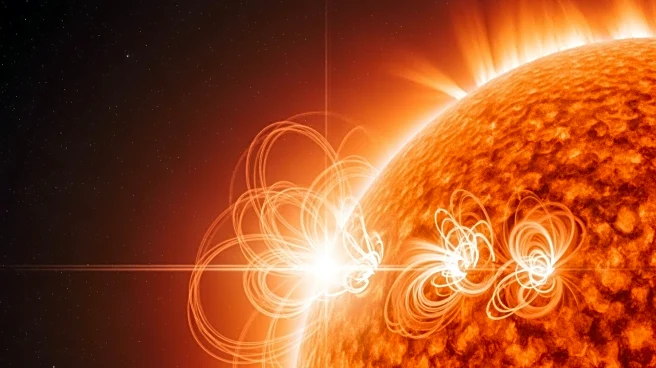What's Happening?
Researchers have discovered small-scale torsional Alfvén waves in the Sun's corona, providing a long-sought explanation for why the corona is significantly hotter than the Sun's surface. These waves, which
twist through magnetic fields, transport plasma upwards and help explain the transfer of energy from the Sun's surface to its outer atmosphere. The discovery was made using high-resolution imagery from the Daniel K. Inouye Solar Telescope, marking a significant advancement in understanding solar dynamics.
Why It's Important?
This breakthrough resolves a decades-old mystery about the Sun's heat distribution and enhances our understanding of solar physics. By identifying the role of Alfvén waves in heating the corona, scientists can improve models of solar activity and space weather forecasting. This knowledge is crucial for predicting geomagnetic storms that can impact Earth's satellite networks and power systems. The findings also provide a foundation for testing other theories about the Sun's behavior and its influence on the solar system.
What's Next?
Future research will focus on studying the mechanisms and distributions of Alfvén waves across the corona in more detail. Scientists aim to explore their impact on solar winds and other solar phenomena, potentially leading to improved space weather predictions. This research will also contribute to a deeper understanding of the Sun's influence on the solar system and its role in shaping the space environment.











